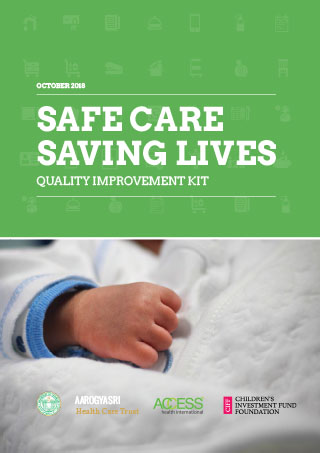Quality of care is a key component to achieving universal health coverage. The process of quality improvement consists of systematic and continuous actions that lead to measurable improvements in healthcare processes and outcomes. The benefit of quality improvement is that it helps providers and policymakers to think through and test new ideas, monitor and evaluate progress, and adjust actions based on the results.
This Quality Improvement Toolkit for Newborn Care was developed as part of the Safe Care, Saving Lives quality improvement program which worked to improve the quality of care in public and private neonatal intensive care units in two states in India. The toolkit is based on a set of clinical practices that have the potential to improve the outcomes of neonatal care, known as Potentially Better Practices. The practices are targeted at prevention and management of three key contributors of newborn mortality: birth asphyxia, sepsis, and complications from premature births.
The list of practices in this collection is not exhaustive, exclusive, or all-inclusive. Instead, these practices can be viewed as an initial set of actions that should then be tested and adapted to the specific challenges and opportunities in any other neonatal unit. Each practice in the toolkit has an aim, measures, and tips and tools for implementation and ongoing improvement. This toolkit was created alongside the Safe Care, Saving Lives Change Package for Quality Improvement in Newborn Care and Standard Operating Procedures.


